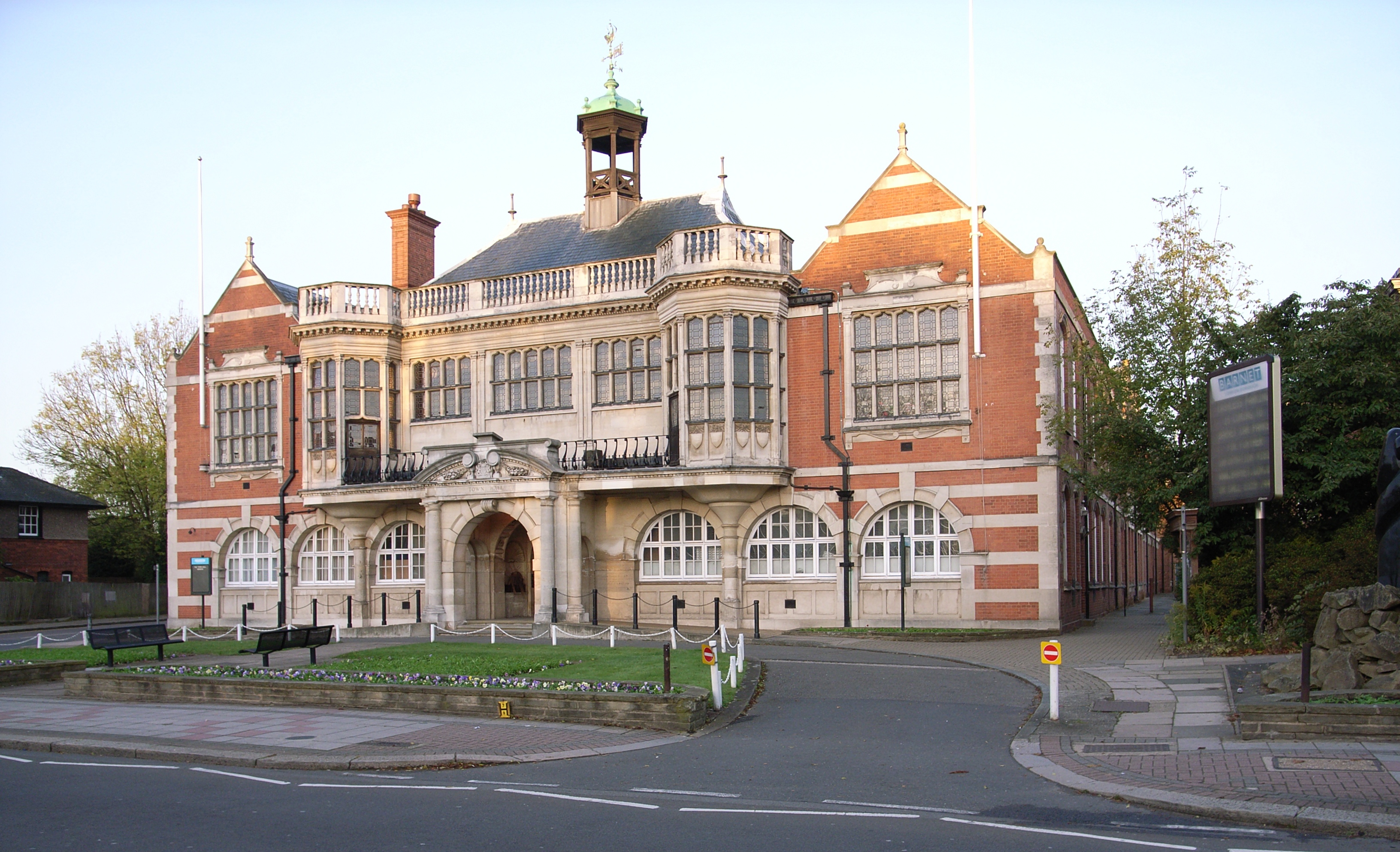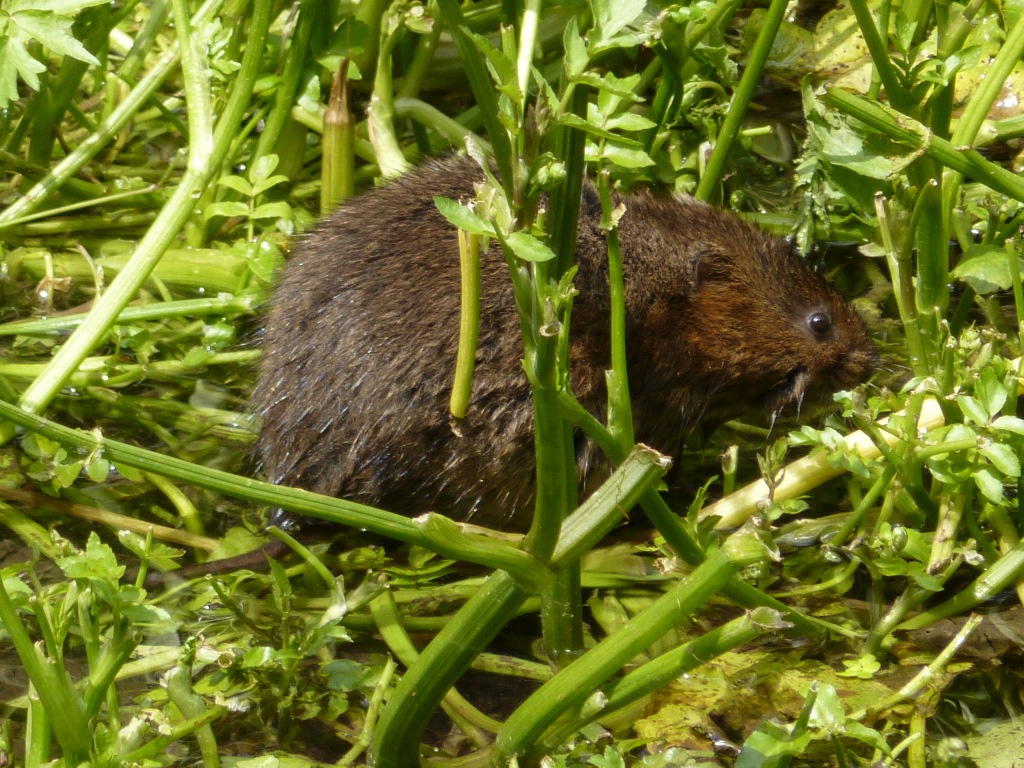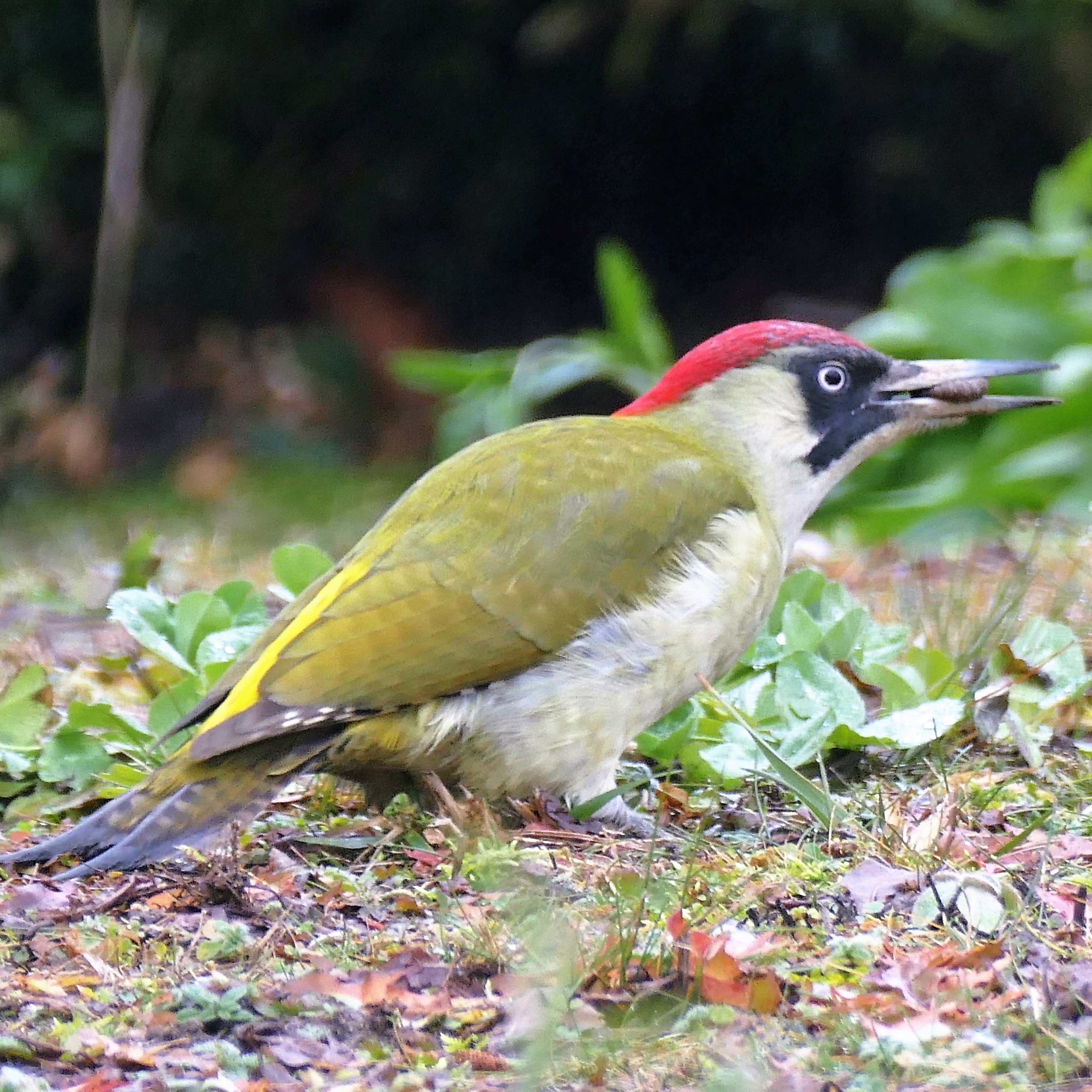|
Arkley South Field
Arkley South Fields are a Site of Borough Importance for Nature Conservation, Grade II, in Arkley in the London Borough of Barnet. It is an extensive area of set-aside agricultural fields with hedgerows and ditches. It is not of great botanical interest, and its conservation value lies in its breeding birds, especially skylarks, a declining species which is a priority under the UK Biodiversity Action Plan. It also supports breeding meadow pipits, kestrels, reed buntings, whitethroats, willow warblers and green woodpeckers. There is no public access, but going down Barnet Gate Lane from Barnet Road, it can be viewed after the last houses on the left. See also *Nature reserves in Barnet The London Borough of Barnet, on the northern outskirts of London, is mainly residential, but it has large areas of green space and farmland. The spread of suburban development into the countryside was halted by the designation of a statutory Gr ... References {{Authority control Natur ... [...More Info...] [...Related Items...] OR: [Wikipedia] [Google] [Baidu] |
Arkley South Field
Arkley South Fields are a Site of Borough Importance for Nature Conservation, Grade II, in Arkley in the London Borough of Barnet. It is an extensive area of set-aside agricultural fields with hedgerows and ditches. It is not of great botanical interest, and its conservation value lies in its breeding birds, especially skylarks, a declining species which is a priority under the UK Biodiversity Action Plan. It also supports breeding meadow pipits, kestrels, reed buntings, whitethroats, willow warblers and green woodpeckers. There is no public access, but going down Barnet Gate Lane from Barnet Road, it can be viewed after the last houses on the left. See also *Nature reserves in Barnet The London Borough of Barnet, on the northern outskirts of London, is mainly residential, but it has large areas of green space and farmland. The spread of suburban development into the countryside was halted by the designation of a statutory Gr ... References {{Authority control Natur ... [...More Info...] [...Related Items...] OR: [Wikipedia] [Google] [Baidu] |
Site Of Nature Conservation Interest
Site of Nature Conservation Interest (SNCI), Site of Importance for Nature Conservation (SINC) and regionally important geological site (RIGS) are designations used by local authorities in the United Kingdom for sites of substantive local nature conservation and geological value. The Department for Environment, Food and Rural Affairs has recommended the generic term 'local site', which is divided into 'local wildlife site' and 'local geological site'. There are approximately 35,000 local sites, and according to the former Minister for Biodiversity, Jim Knight, they make a vital contribution to delivering the UK and Local Biodiversity Action Plans and the Geodiversity Action Plan, as well as maintaining local natural character and distinctiveness. Sites of Special Scientific Interest (SSSIs) and local nature reserves (LNRs) have statutory protection, but they are only intended to cover a representative selection of sites, and Local sites are intended to provide comprehensive cov ... [...More Info...] [...Related Items...] OR: [Wikipedia] [Google] [Baidu] |
Arkley
Arkley is an area of north London, England, within the London Borough of Barnet. It is located north-northwest of Charing Cross. It consists of a long village strung out between Barnet and Stirling Corner, roughly centred on the "Gate" pub, and composed of the ancient hamlets of Barnet Gate, Rowley Green and Arkley. At above sea level, Arkley is one of the highest points in London. History Toponymy The origins of the name ''Arkley'' are unclear; it is first recorded as ''Arkleyslond'' in 1332. The first element of the name appears to come from the Old English word ''(e)arc'' (or ark, meaning a chest, bin or other wooden receptacle), while the second element is from ''leāh'', a woodland clearing or glade. ''–lond'' in the earlier name means "cultivated ground". The name ''Arkley'' would thus mean "woodland clearing by the ark or by the place where arks are made". Historical background It is thought by some that Hendon Wood Lane was originally a minor Roman road. ... [...More Info...] [...Related Items...] OR: [Wikipedia] [Google] [Baidu] |
London Borough Of Barnet
The London Borough of Barnet () is a suburban London boroughs, London borough in North London. The borough was formed in 1965 from parts of the ceremonial counties of Middlesex and Hertfordshire. It forms part of Outer London and is the largest London borough by population with 384,774 inhabitants, also making it the 13th largest List of English districts by population, district in England. The borough covers an area of , the fourth highest of the 32 London boroughs, and has a population density of 45.8 people per hectare, which ranks it 25th. Barnet borders the Hertfordshire district of Hertsmere to the north and five other London boroughs: London Borough of Camden, Camden and London Borough of Haringey, Haringey to the southeast, London Borough of Enfield, Enfield to the east, as well as London Borough of Harrow, Harrow and London Borough of Brent, Brent to the west of the ancient Watling Street (now the A5 road). The borough's major urban settlements are Hendon, Finchley, Gol ... [...More Info...] [...Related Items...] OR: [Wikipedia] [Google] [Baidu] |
Skylark
''Alauda'' is a genus of larks found across much of Europe, Asia and in the mountains of north Africa, and one of the species (the Raso lark) endemic to the islet of Raso in the Cape Verde Islands. Further, at least two additional species are known from the fossil record. The current genus name is from Latin ''alauda'', "lark". Pliny the Elder thought the word was originally of Celtic origin. Taxonomy and systematics The genus ''Alauda'' was introduced by the Swedish naturalist Carl Linnaeus in 1758 in the tenth edition of his ''Systema Naturae''. The type species was subsequently designated as the Eurasian skylark. The genus ''Alauda'' has four extant and at least two extinct species. Formerly, many other species have also been considered to belong to the genus. Extant species The genus contains four species: Extinct species * †''Alauda xerarvensis'' (late Pliocene of Varshets, Bulgaria) * †''Alauda tivadari'' (late Miocene of Polgardi, Hungary) Former species Previ ... [...More Info...] [...Related Items...] OR: [Wikipedia] [Google] [Baidu] |
UK Biodiversity Action Plan
The United Kingdom Biodiversity Action Plan or (UK BAP) was the UK government's response to the Convention on Biological Diversity, opened for signature at the Rio Earth Summit in 1992. The UK was the first country to produce a national Biodiversity Action Plan. It was published in 1994 and created action plans for priority species and habitats in the UK that were most under threat so as to support their recovery. Purpose The UK Biodiversity Action Plan summarised the most threatened or rapidly declining biological resources of the United Kingdom, and gave detailed plans for their conservation. Individual 'Action Plans' were provided for these habitats and species, and a reporting mechanism was established to demonstrate how the UK BAP was contributing to the United Kingdom's commitment to help reduce or halt the significant losses in global biodiversity, highlighted by the international Convention on Biological Diversity. The original publication included action plans for 45 habi ... [...More Info...] [...Related Items...] OR: [Wikipedia] [Google] [Baidu] |
Meadow Pipit
The meadow pipit (''Anthus pratensis'') is a small passerine bird, which breeds in much of the Palearctic, from southeastern Greenland and Iceland east to just east of the Ural Mountains in Russia, and south to central France and Romania; an isolated population also occurs in the Caucasus Mountains. It is migratory over most of its range, wintering in southern Europe, North Africa, and south-western Asia, but is resident year-round in western Europe, though even here many birds move to the coast or lowlands in winter. Taxonomy The meadow pipit was formally described by Swedish naturalist Carl Linnaeus in 1758 in the 10th edition of his ''Systema Naturae'' under the binomial name ''Alauda pratensis''. The type locality is Sweden. The meadow pipit is now the type species of the genus ''Anthus'' that was introduced in 1805 by German naturalist Johann Matthäus Bechstein. The species is monotypic; no subspecies are recognised. The generic name ''Anthus'' is the Latin name for a ... [...More Info...] [...Related Items...] OR: [Wikipedia] [Google] [Baidu] |
Kestrel
The term kestrel (from french: crécerelle, derivative from , i.e. ratchet) is the common name given to several species of predatory birds from the falcon genus ''Falco''. Kestrels are most easily distinguished by their typical hunting behaviour which is to hover at a height of around over open country and swoop down on ground prey, usually small mammals, lizards or large insects, while other falcons are more adapted for active hunting during flight. Kestrels are notable for usually having mostly brown in their plumage. Description Most species termed kestrels appear to form a distinct clade among the falcons, as suggested by comparison of mtDNA cytochrome ''b'' sequence data and morphology. This seems to have diverged from other ''Falco'' around the Miocene–Pliocene boundary (Messinian to Zanclean, or about 7–3.5 mya). The most basal "true" kestrels are three species from Africa and its surroundings which lack a malar stripe, and in one case have—like other falcons ... [...More Info...] [...Related Items...] OR: [Wikipedia] [Google] [Baidu] |
Reed Bunting
The common reed bunting (''Emberiza schoeniclus'') is a passerine bird in the bunting family Emberizidae, a group now separated by most modern authors from the finches, Fringillidae. The genus name ''Emberiza'' is from Old German ''Embritz'', a bunting. The specific ''schoeniclus'' is from Ancient Greek ''skhoiniklos'', a now unknown waterside bird. It breeds across Europe and much of the Palearctic. Most birds migrate south in winter, but those in the milder south and west of the range are resident. It is common in reedbeds and also breeds in drier open areas such as moorland and cultivation. For example, it is a component of the purple moor grass and rush pastures, a type of Biodiversity Action Plan habitat in the UK. It occurs on poorly drained neutral and acidic soils of the lowlands and upland fringe. Taxonomy The common reed bunting was described by the Swedish naturalist Carl Linnaeus in 1758 in the tenth edition of his ''Systema Naturae'' under the binomial name '' ... [...More Info...] [...Related Items...] OR: [Wikipedia] [Google] [Baidu] |
Common Whitethroat
The common whitethroat or greater whitethroat (''Curruca communis'') is a common and widespread typical warbler which breeds throughout Europe and across much of temperate western Asia. This small passerine bird is strongly migratory, and winters in tropical Africa, Arabia, and Pakistan. Taxonomy The English ornithologist John Latham described the common whitethroat in 1783 in his ''A General Synopsis of Birds'' but introduced the binomial name ''Sylvia communis'' in the supplement to this work which was published in 1787. The specific ''communis'' is Latin for "common". The common whitethroat is now placed in the genus ''Curruca'' that was introduced by the German naturalist Johann Matthäus Bechstein in 1802. This species may appear to be closely related to the lesser whitethroat, the species having evolved only during the end of the last ice age similar to the willow warbler and chiffchaffs. However, researchers found the presence of a white throat is an unreliable morpho ... [...More Info...] [...Related Items...] OR: [Wikipedia] [Google] [Baidu] |
Willow Warbler
The willow warbler (''Phylloscopus trochilus'') is a very common and widespread leaf warbler which breeds throughout northern and temperate Europe and the Palearctic, from Ireland east to the Anadyr River basin in eastern Siberia. It is strongly migratory, with almost all of the population wintering in sub-Saharan Africa. It is a bird of open woodlands with trees and ground cover for nesting, including most importantly birch, alder, and willow habitats. The nest is usually built in close contact with the ground, often in low vegetation. Like most Old World warblers (Sylviidae), this small passerine is insectivorous. In northern Europe, it is one of the first warblers to return in the spring, though later than the closely related chiffchaff. Taxonomy The willow warbler was formally described by the Swedish naturalist Carl Linnaeus in 1758 in the tenth edition of his ''Systema Naturae'' under the binomial name ''Motacilla trochilus''. The willow warbler is now one of around 8 ... [...More Info...] [...Related Items...] OR: [Wikipedia] [Google] [Baidu] |
European Green Woodpecker
The European green woodpecker (''Picus viridis'') is a large green woodpecker with a bright red crown and a black moustache. Males have a red centre to the moustache stripe which is absent in females. It is resident across much of Europe and the western Palearctic but in Spain and Portugal it is replaced by the similar Iberian green woodpecker (''Picus sharpei''). The European green woodpecker spends much of its time feeding on ants on the ground and does not often 'drum' on trees like other woodpecker species. Though its vivid green and red plumage is particularly striking, it is a shy bird, and is more often heard than seen, drawing attention with its loud calls. A nest hole is excavated in a tree; four to six eggs are laid which hatch after 19–20 days. Taxonomy The European green woodpecker was formally described by the Swedish naturalist Carl Linnaeus in 1758 in the tenth edition of his ''Systema Naturae'' under its current binomial name ''Picus viridis''. The type lo ... [...More Info...] [...Related Items...] OR: [Wikipedia] [Google] [Baidu] |



.jpg)

